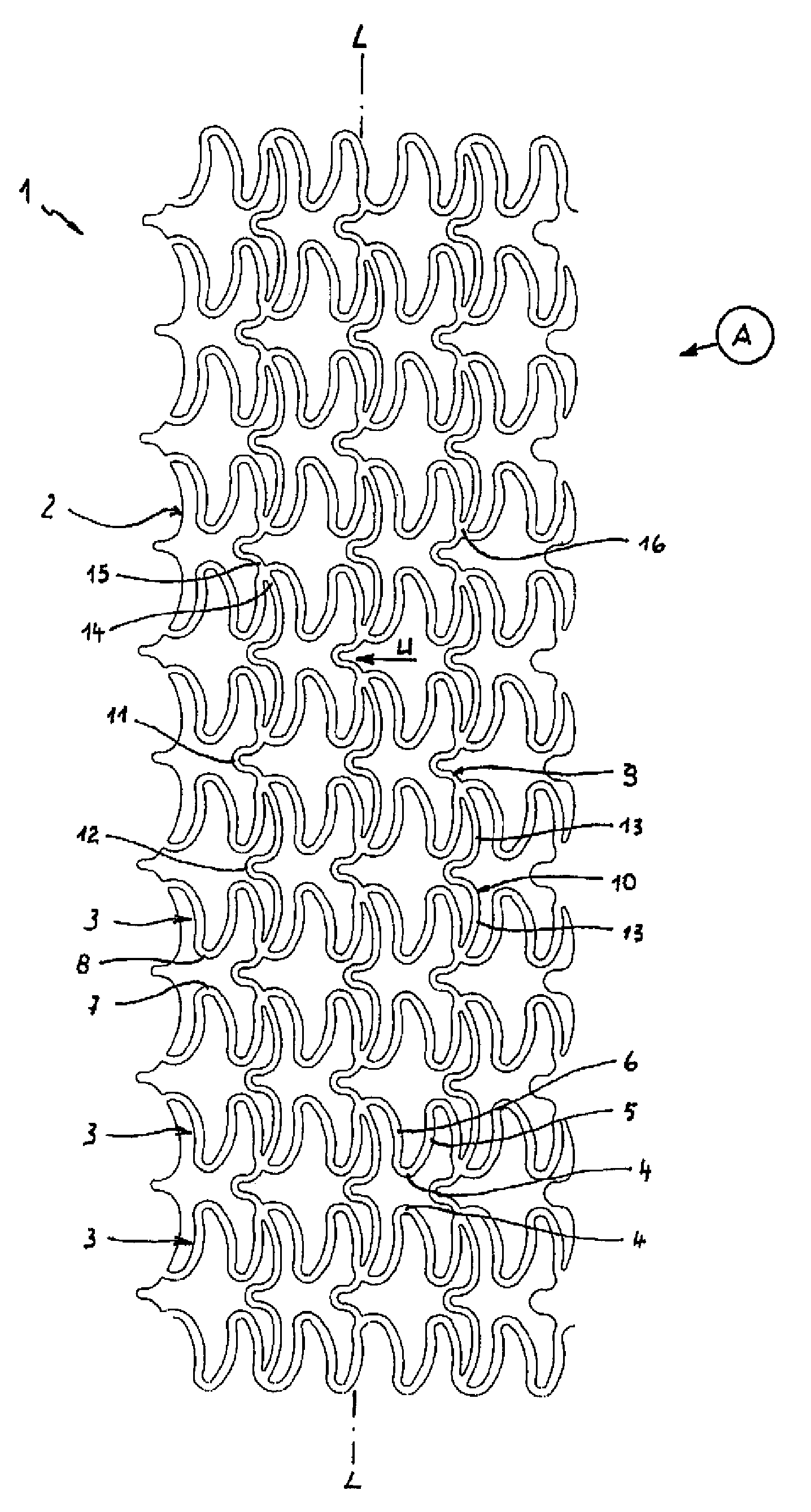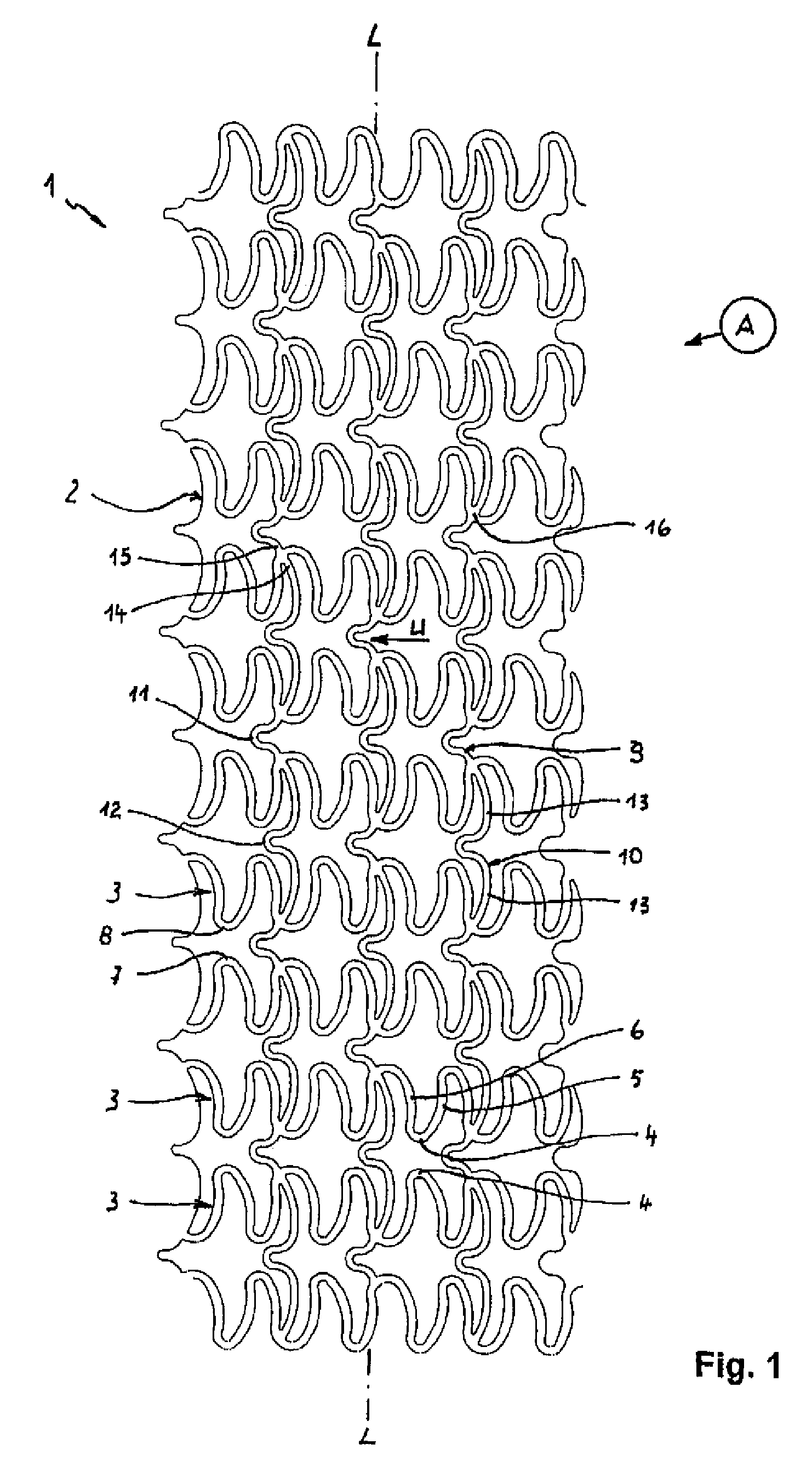Stent
a technology of stents and stents, applied in the field of stents, can solve the problems of other constructions, inability to provide the necessary radial force, and oftentimes the support frame is not strong enough
- Summary
- Abstract
- Description
- Claims
- Application Information
AI Technical Summary
Benefits of technology
Problems solved by technology
Method used
Image
Examples
Embodiment Construction
[0023]FIGS. 1 and 2 show each a developed view of the stent pattern of a stent 1 according to the invention. FIG. 1 shows the stent pattern of the stent 1 in initial state A after its manufacture. FIG. 2 represents the developed view of the stent pattern in expanded support state S.
[0024]The stent 1 is made of metal or plastic and includes a tubular support frame 2 of several ring segments 3 arranged successively behind one another. The illustrations of FIGS. 1 and 2 are not to scale. In particular FIG. 2 does not illustrate the total number of ring segments 3 of the stent 1 as in FIG. 1.
[0025]In the non-expanded initial state A, as shown in FIG. 1, the ring segments 3 have a wave-like configuration of struts 5, 6 which continuously adjoin one another via arcuate sections 4. Wave crests 7, on one hand, and wave valleys 8, on the other hand, of adjacent ring segments 3 oppose one another frontally. The rings segments 3 are interconnected by connectors 9, 10 which extend in the direct...
PUM
 Login to View More
Login to View More Abstract
Description
Claims
Application Information
 Login to View More
Login to View More - R&D
- Intellectual Property
- Life Sciences
- Materials
- Tech Scout
- Unparalleled Data Quality
- Higher Quality Content
- 60% Fewer Hallucinations
Browse by: Latest US Patents, China's latest patents, Technical Efficacy Thesaurus, Application Domain, Technology Topic, Popular Technical Reports.
© 2025 PatSnap. All rights reserved.Legal|Privacy policy|Modern Slavery Act Transparency Statement|Sitemap|About US| Contact US: help@patsnap.com



